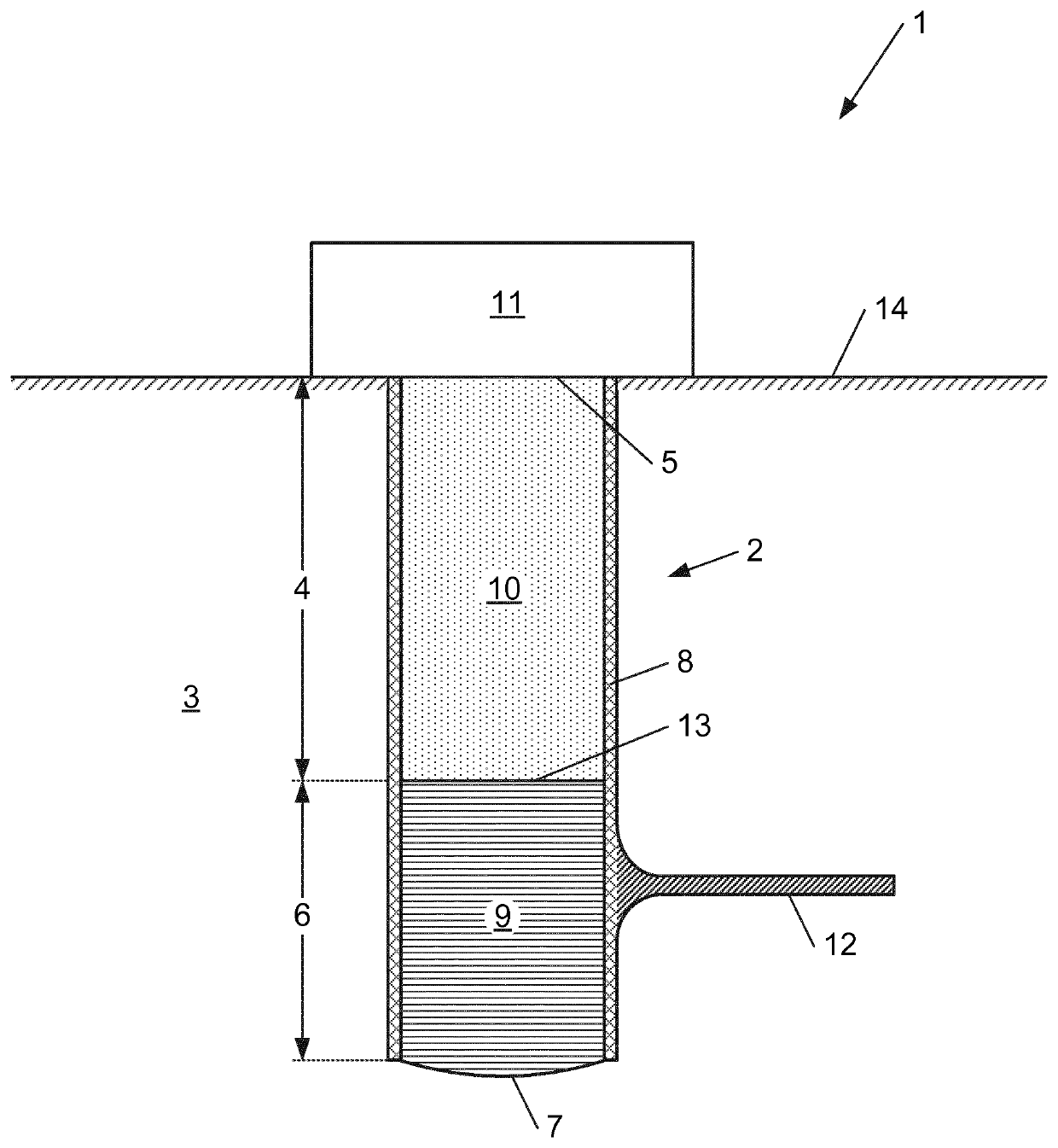Efficient geothermal heat energy extraction system
a geothermal heat energy and extraction system technology, applied in the field of geothermal energy extraction, can solve the problems of increasing land subsidence, increasing geothermal pollution, and high inefficiency of active transportation of heating fluid through the pumping of heating fluid
- Summary
- Abstract
- Description
- Claims
- Application Information
AI Technical Summary
Benefits of technology
Problems solved by technology
Method used
Image
Examples
Embodiment Construction
[0086]Other details and advantages of the method of to the invention will become apparent from the enclosed figures and description of preferred embodiments of the invention.
[0087]FIG. 1 shows a cross-section side view of the geothermal heat extraction system.
[0088]The FIG. 1 shows an embodiment of a geothermal heat extraction system 1 comprising an heat extractor 11 and a geothermal well 2, said geothermal well being provided within the crust material 3.
[0089]The crust material 3 is a part of the earth above the earth mantle and can consist of many different types of soils and rocks. The crust material extends in the direction opposed the gravitational acceleration vector up to a crust material surface 14 at which level the geothermal well 2 reaches a geothermal well top level 5 and at which level the heat extractor 11 is positioned. The geothermal well 2 extends in a first direction along the gravitational acceleration vector, from a well top part 4 starting at a well top level 5 ...
PUM
 Login to view more
Login to view more Abstract
Description
Claims
Application Information
 Login to view more
Login to view more - R&D Engineer
- R&D Manager
- IP Professional
- Industry Leading Data Capabilities
- Powerful AI technology
- Patent DNA Extraction
Browse by: Latest US Patents, China's latest patents, Technical Efficacy Thesaurus, Application Domain, Technology Topic.
© 2024 PatSnap. All rights reserved.Legal|Privacy policy|Modern Slavery Act Transparency Statement|Sitemap

